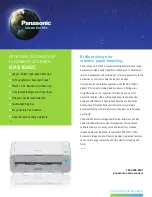
40
recently? Sometimes things get
reconnected in the wrong place, or
not at all.
• Don’t take shortcuts. Inspect hoses
and wiring which may be difficult to
see because of location beneath air
cleaner housings, alternators and
similar components.
• Inspect the air cleaner and ductwork
for defects.
• Check sensors and actuators for
damage.
• Inspect all vacuum hoses for:
– Correct routing. Refer to vehicle
service manual, or Vehicle Emission
Control
Information
(VECI) decal
located in the
engine
compart-
ment.
– Pinches and kinks.
– Splits, cuts or breaks.
• Inspect wiring for:
– Contact
with sharp
edges. (This
happens
often.)
– Contact
with hot
surfaces, such as exhaust manifolds.
– Pinched, burned or chafed
insulation.
– Proper routing and connections.
• Check electrical connectors for:
– Corrosion on pins.
– Bent or damaged pins.
– Contacts not properly seated in
housing.
– Bad wire crimps to terminals.
HVAC/
CRUISE
BRAKE BOOSTER
FUEL
PRESS
REG
EGR
VAC
REG
EGR
VAC
REG
TO TRANS
MODE
. ..
9RAC2LAB
FRONT
OF CAR
GAP
.S.A.
STER
E M
S T
Bent Pins
Corrosion
Problems with connectors are
common in the engine control system.
Inspect carefully. Note that some
connectors use a special grease on
the contacts to prevent corrosion. Do
not wipe off! Obtain extra grease, if
needed, from your vehicle dealer. It is
a special type for this purpose. Repair
any problems found during the visual
inspection and retest the vehicle. If
the original symptom is still present,
continue the test. Go to Step 3,
“Prepare Vehicle.”
3) Prepare Vehicle.
• Turn off all electrical equipment and
accessories in vehicle.
• Keep all vehicle doors closed during
testing.
• Make sure radiator coolant and
transmission fluid are at proper
levels.
• If the air cleaner must be removed
(for example to measure the choke
voltage), leave all vacuum hoses
attached to the air cleaner housing.
• Start the engine and allow it to idle.
If the engine does not start, refer to
the “No Start” diagnostic procedure
in the vehicle service manual.
WARNING: Always operate vehicle
in a well ventilated area.
Do NOT inhale exhaust gases –
they are very poisonous! Stay away
from moving parts!
• Check for power at the choke while
the engine is running. Use a
voltmeter to measure the voltage
between the choke cap terminal and
engine ground.
— Battery Powered Choke: voltage
should be about 12 volts.
— Alternator Powered Choke:
voltage should be about 7.5 volts. If
any problems are found in the choke
power circuit, make necessary
repairs and re-do the Self-Test
process starting with Step 1.
Continue this procedure if no
problems are found.
• Allow the engine to idle until the
upper radiator hose is hot and
pressurized and RPM has settled to
warm engine idle speed. Check for
leaks around hose connections.
• Turn ignition key to OFF position.
















































